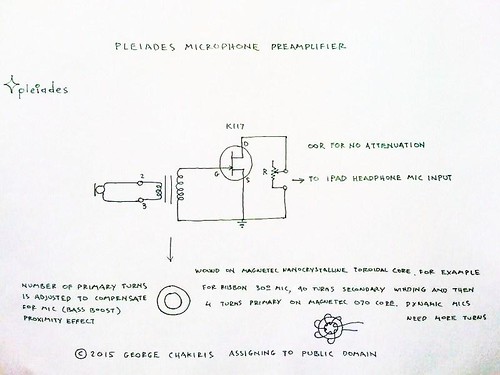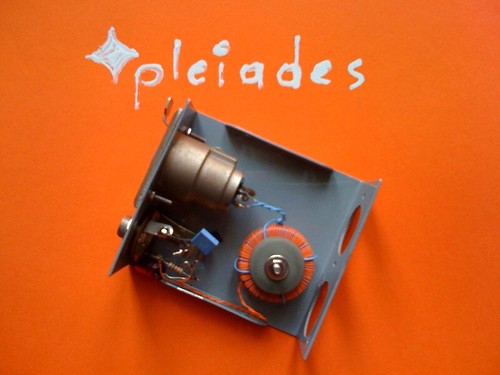Octave stretch
Octave stretch
Since the days of Pythagoras (or even earlier) the musical
octave interval has been associated with the ratio 1:2. Until the
17th Century, that ratio was essentially referring to the lengths
of two strings with the same stress that give tones which are
heard as being in the particular relationship of octave equivalence. In Galileo's days it
became known that tones are periodic oscillations of air pressure
and that the pitch of tones is
determined by oscillation frequency. So the meaning of the 1:2
ratio was generalized, now referring to the frequency ratio of
periodic tones of any origin. Understandably, in ancient
days it was not possible to determine the ratio to an accuracy
of, say, a few percent. So it was not possible to tell whether
the ratio is precisely 1:2. Besides, hardly anyone cared -
at least until the beginning of psychophysics in the second half
of the 19th century. Stumpf
(1890a) appears to have been the first to report on the
observation that when the frequency of a tone is adjusted such
that the auditory sense of octave
equivalence is satisfied in comparison with a fixed preceding
tone, the frequency ratio of the tones tends to be slightly
greater than 2:1.
With simultaneous periodic tones it is easy to adjust
them very accurately to a 2:1 frequency ratio just "by
ear": When the frequencies differ ever so slightly from that
ratio, beats are heard. Accurate tuning to 2:1 thus is merely a
matter of making the beats as slow as possible, i.e., by
adjusting either of the two frequencies appropriately. However,
that kind of "octave adjustment" is in no respect
dependent on the perception of pitch; little or nothing can be
learned from it about the pitch interval that corresponds to
octave-equivalent tones. With respect to music it is most
interesting to know precisely the width of the pitch interval
pertinent to auditory octave equivalence.
Measurement of that interval is easy enough. The listener is
presented with a pair of alternating, i.e., successive
tones of which one frequency is fixed, the other, variable. The
listener adjusts the variable tone until optimal octave
equivalence is obtained. This requires, of course, that listeners
somehow are familiar with the music-psychological concept of
"octave", and that they possess a built-in
pitch-interval template of the octave interval to which the
pitches of the test tones can be matched. This is more or less
synonymous with saying that the auditory sense of octave
equivalence is required to exist. As it turns out, this criterion
indeed is met by the vast majority of individuals, i.e., not only
in trained musicians but also in individuals who are musically
inactive. Even in populations outside the Western musical culture
existence of the sense for octave equivalence was verified (Burns & Ward 1982a).
Another requirement to do the above octave-adjustment
experiment is sufficient accuracy of auditory short-term memory
for pitch. This criterion in fact is met by the auditory system.
High accuracy of short-term memory for pitch is a basic and
universal feature of any normal auditory system. This is why
successive tones can be adjusted to octave equivalence with a
precision that is essentially identical to the accuracy to which
the pitch of single tones can be measured. Octave adjustment with
tone pairs that are two or more octaves apart, however, appears
to require some musical experience and talent (Thurlow & Erchul 1977a).
The octave-adjustment experiment yields two frequencies, f1,
and f2, which correspond to aurally estimated optimal
octave equivalence. Formally, octave stretch - or, in a more
general term, octave deviation - then is suitably defined
by
where f1 < f2 is presumed. Octave stretch
is indicated by W > 0.
Depending on a number of parameters, values of W are obtained that, grossly, are in the
range between 0 and a few percent (positive). It was shown by Walliser (1969b) that octave
stretch is additive: When f2 was obtained as
corresponding to the octave of f1, and f4
was in another experiment obtained as corresponding to the octave
of f2, then a third experiment in which the listener
adjusts f4 relative to f1 (i.e., spanning
two octaves) yields a stretch that is the sum of those obtained
in the first two single-octave tests.
Octave stretch with tones of musical instruments was described
by Corso (1954b). The first
comprehensive study of the phenomenon was carried out by Ward (1954a), who essentially
used sine tones and determined octave deviations in a wide range
of reference frequencies f1. Though the data obtained
in the latter study demonstrate that, grossly, there is a
tendency for octave stretch, they also show that, in an
individual ear of an individual listener, the octave deviation W may at particular frequencies as well be
systematically negative. As a function of reference frequency,
the octave deviation shows an oscillating pattern that is
comparable to that found in binaural
diplacusis (cf. van den
Brink 1970a, [104] p. 338). The
pattern is characteristic for any particular ear of any
particular listener, and it is reproducible (van den Brink 1977a). It may
thus be concluded that the gross tendency for octave stretch is
superimposed by more effects, in particular, by the oscillating
deviations of the ''frequency-to-pitch'' characteristic of an ear
that can be indirectly deduced from measurements of binaural
diplacusis (van den Brink 1977a,
[100]).
Such systematic details of the frequency characteristic of W can occur only if the experiments are done
with sine tones, and if the tones are presented monaurally. This
is plausible, as the oscillating structure of that characteristic
is different for each ear, such that it is averaged out when both
ears are used at once. Therefore, in binaural octave adjustments
with sine tones, and in monaural or binaural adjustments with
harmonic complex tones, these details are not expected to occur,
and they are in fact not found in the results of, e.g., Walliser (19969b), Sundberg &
Lundqvist (1973a), Dobbins
& Cuddy (1982a), [11]. What
remains as a general effect is octave
stretch. With harmonic complex tones, the octave stretch is
generally smaller than with corresponding sine tones (Sundberg &
Lindqvist 1973a, [11]).
The explanation of octave stretch virtually is included in the
explanation of octave equivalence
(see also topic affinity of tones).
To explain the stretch of the octave one just has to
take into account the phenomenon of pitch
shifts. The key to explaining octave equivalence is the multiplicity
of pitch of harmonic complex tones (see topic definition of pitch). Any harmonic
complex tone evokes not only spectral
pitches but also virtual pitches,
of which the former occur above fundamental frequency, i.e. in harmonic
positions, the latter below fundamental frequency, i.e. in subharmonic
positions ([104] p. 313). Due to
that kind of pitch multiplicity, harmonic complex tones whose
oscillation frequencies are in a 1:2 ratio (or close to that)
inevitably will have a number of pitches in common - which yields
a kind of similarity. This is my explanation of octave
equivalence. The explanation of octave stretch immediately
follows from that, i.e., by taking into account that the
intervals between the pitches of a harmonic complex tone must be
expected to be stretched by pitch shifts. Due to this stretch of
the pitch pattern, the best match of the two pitch patterns is
obtained for an oscillation-frequency ratio that, on the average,
somewhat exceeds the value 2:1 [86],
[88], [93],
[104] p. 197.
Author: Ernst Terhardt
Mar 10 2000
main page
File translated from TEX by TTH, version 2.61

